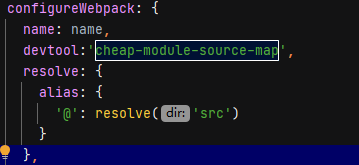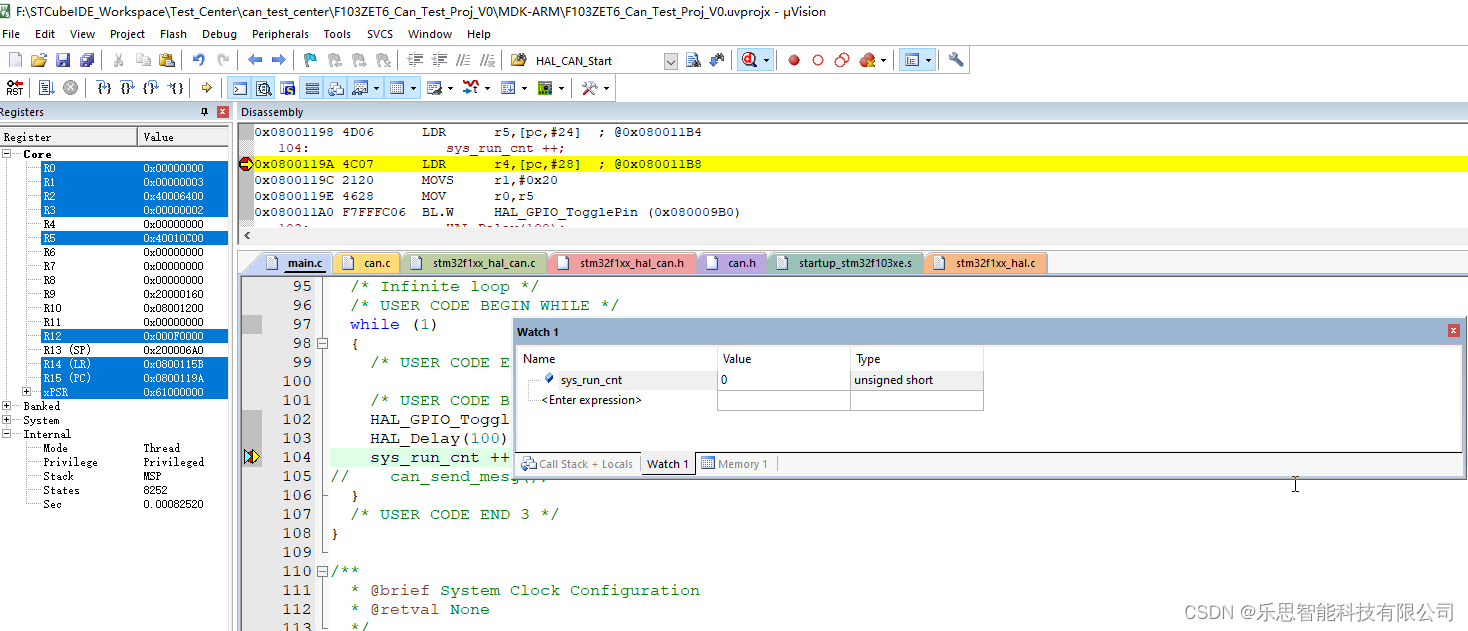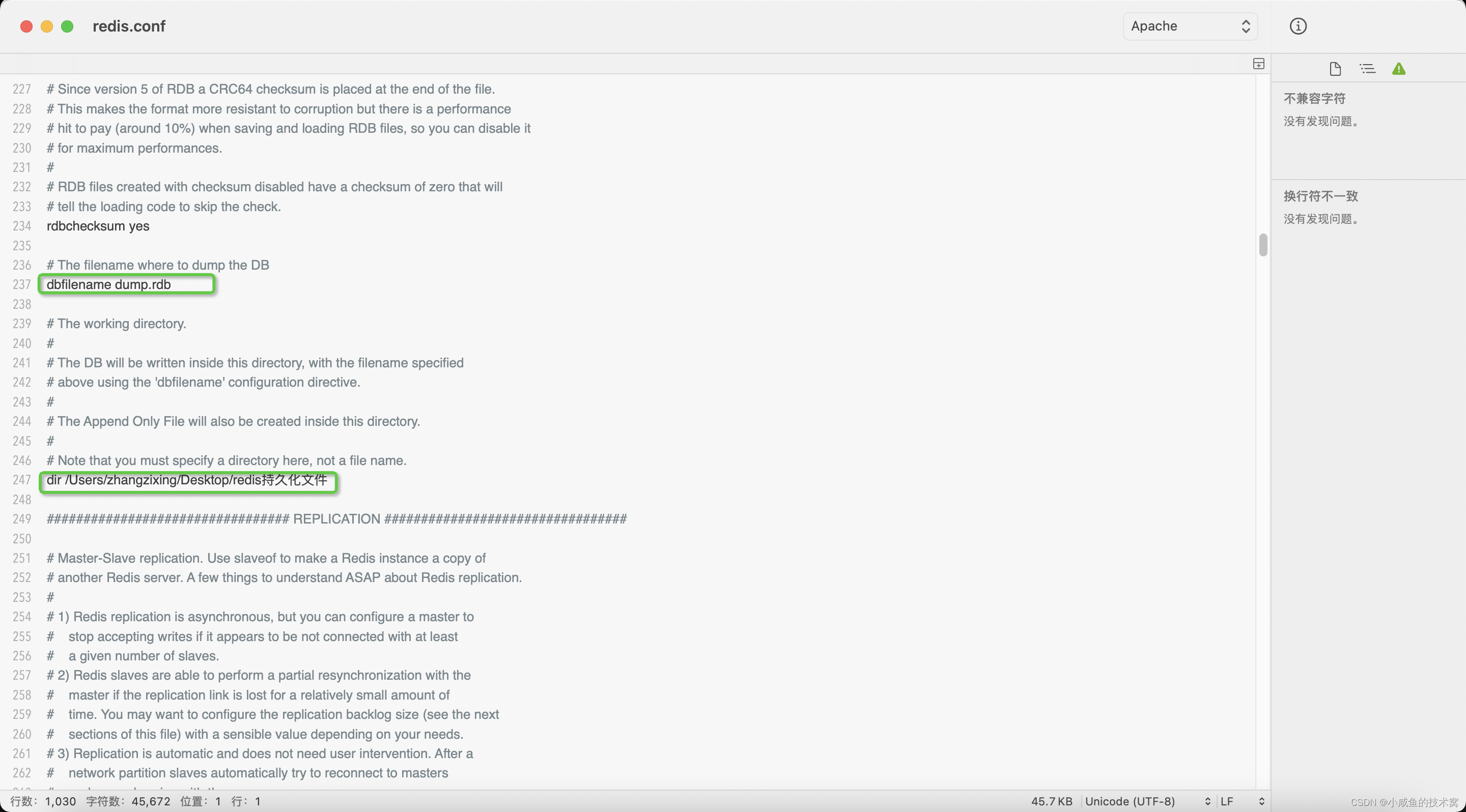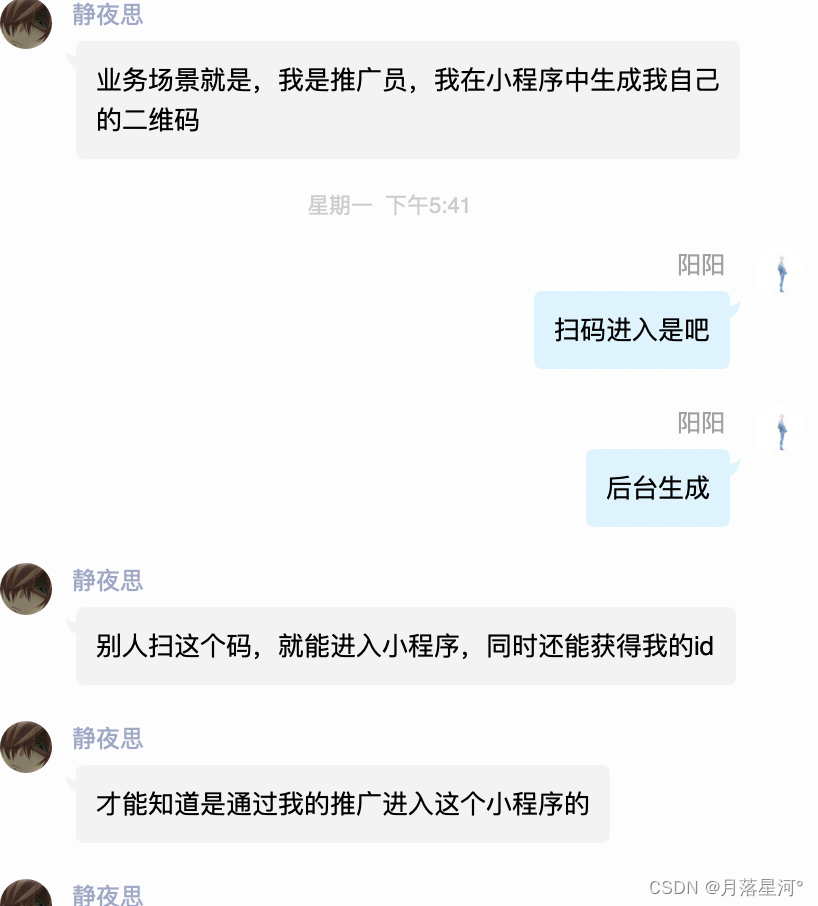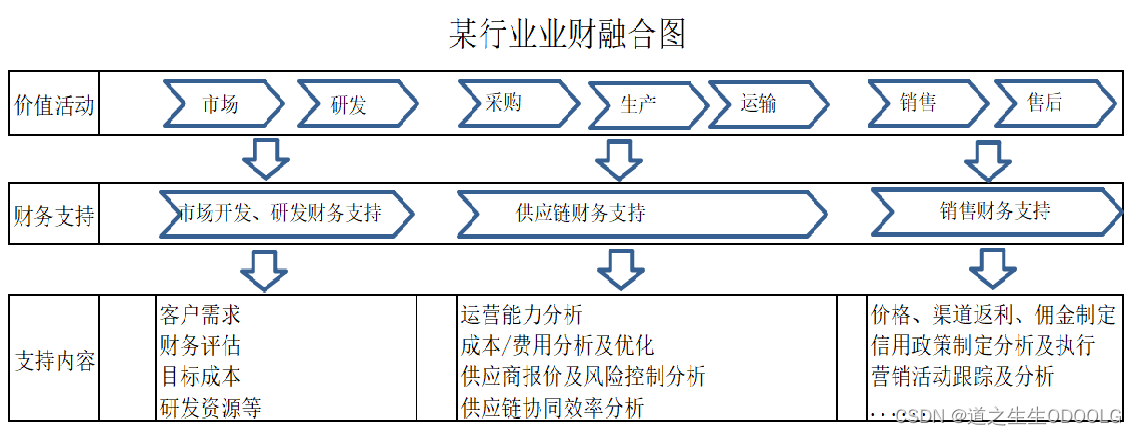目录
- 1、基本介绍
- 2、基本环境
- 3、核心代码
- 3.1、车牌识别
- 3.2、车牌定位
- 3.3、车牌坐标矫正
- 4、界面展示
- 4.1、主界面
- 4.2、车牌检测
- 4.3、查询功能
- 5、演示
- 6、链接
1、基本介绍
本项目采用tensorflow,opencv,pyside6和pymql编写,pyside6用来编写UI界面,进行界面展示;tensorflow用来训练模型检测字符和车牌定位;使用opencv进行边缘检测,获取车牌区域的边缘坐标和最小外接矩形4个端点坐标,再从车牌的边缘坐标中计算出和最小外接矩形4个端点,最近的点即为平行四边形车牌的四个端点,从而实现车牌的定位和矫正;pysql主要用来实现基本的数据库读写插入功能。
2、基本环境
pyside6==6.5.0
tensorflow>=2.0.0
opencv-python==4.8.1.78
pymysql==1.0.3
3、核心代码
3.1、车牌识别
#车牌识别
def cnn_predict(cnn, Lic_img):
characters = ["京", "沪", "津", "渝", "冀", "晋", "蒙", "辽", "吉", "黑", "苏", "浙", "皖", "闽", "赣", "鲁", "豫",
"鄂", "湘", "粤", "桂", "琼", "川", "贵", "云", "藏", "陕", "甘", "青", "宁", "新", "0", "1", "2",
"3", "4", "5", "6", "7", "8", "9", "A", "B", "C", "D", "E", "F", "G", "H", "J", "K", "L", "M",
"N", "P", "Q", "R", "S", "T", "U", "V", "W", "X", "Y", "Z"]
Lic_pred = []
for lic in Lic_img:
lic_pred = cnn.predict(lic.reshape(1, 80, 240, 3))
lic_pred = np.array(lic_pred).reshape(7, 65)
if len(lic_pred[lic_pred >= 0.8]) >= 4:
chars = ''
for arg in np.argmax(lic_pred, axis=1): # 取每行中概率值最大的arg,将其转为字符
chars += characters[arg]
chars = chars[0:2] + '·' + chars[2:]
Lic_pred.append((lic, chars)) # 将车牌和识别结果一并存入Lic_pred
return Lic_pred
3.2、车牌定位
#车牌定位
def unet_predict(unet, img_src_path):
img_src = cv2.imdecode(np.fromfile(img_src_path, dtype=np.uint8), -1)
# img_src=cv2.imread(img_src_path)
if img_src.shape != (512, 512, 3):
img_src = cv2.resize(img_src, dsize=(512, 512), interpolation=cv2.INTER_AREA)[:, :, :3] # dsize=(宽度,高度),[:,:,:3]是防止图片为4通道图片,后续无法reshape
img_src = img_src.reshape(1, 512, 512, 3)
img_mask = unet.predict(img_src) # 归一化除以255后进行预测
img_src = img_src.reshape(512, 512, 3) # 将原图reshape为3维
img_mask = img_mask.reshape(512, 512, 3) # 将预测后图片reshape为3维
img_mask = img_mask / np.max(img_mask) * 255 # 归一化后乘以255
img_mask[:, :, 2] = img_mask[:, :, 1] = img_mask[:, :, 0] # 三个通道保持相同
img_mask = img_mask.astype(np.uint8) # 将img_mask类型转为int型
return img_src, img_mask
3.3、车牌坐标矫正
def locate_and_correct(img_src, img_mask):
"""
该函数通过cv2对img_mask进行边缘检测,获取车牌区域的边缘坐标(存储在contours中)和最小外接矩形4个端点坐标,
再从车牌的边缘坐标中计算出和最小外接矩形4个端点
最近的点即为平行四边形车牌的四个端点,从而实现车牌的定位和矫正
img_src: 原始图片
img_mask: 通过u_net进行图像分隔得到的二值化图片,车牌区域呈现白色,背景区域为黑色
定位且矫正后的车牌
"""
try: # contours1长度为0说明未检测到车牌
contours, hierarchy = cv2.findContours(img_mask[:, :, 0], cv2.RETR_EXTERNAL, cv2.CHAIN_APPROX_SIMPLE)
except:
ret, contours, hierarchy = cv2.findContours(img_mask[:, :, 0], cv2.RETR_EXTERNAL, cv2.CHAIN_APPROX_SIMPLE)
if not len(contours):
# print("未检测到车牌")
return [], []
else:
Lic_img = []
img_src_copy = img_src.copy()
for ii, cont in enumerate(contours):
x, y, w, h = cv2.boundingRect(cont)
img_cut_mask = img_mask[y:y + h, x:x + w]
# contours中除了车牌区域可能会有宽或高都是1或者2这样的小噪点,
# 而待选车牌区域的均值应较高,且宽和高不会非常小,因此通过以下条件进行筛选
if np.mean(img_cut_mask) >= 75 and w > 15 and h > 15:
rect = cv2.minAreaRect(cont) # 针对坐标点获取带方向角的最小外接矩形,中心点坐标,宽高,旋转角度
box = cv2.boxPoints(rect).astype(np.int32) # 获取最小外接矩形四个顶点坐标
cont = cont.reshape(-1, 2).tolist()
# 由于转换矩阵的两组坐标位置需要一一对应,因此需要将最小外接矩形的坐标进行排序,最终排序为[左上,左下,右上,右下]
box = sorted(box, key=lambda xy: xy[0]) # 先按照左右进行排序,分为左侧的坐标和右侧的坐标
box_left, box_right = box[:2], box[2:] # 此时box的前2个是左侧的坐标,后2个是右侧的坐标
box_left = sorted(box_left, key=lambda x: x[1]) # 再按照上下即y进行排序,此时box_left中为左上和左下两个端点坐标
box_right = sorted(box_right, key=lambda x: x[1]) # 此时box_right中为右上和右下两个端点坐标
box = np.array(box_left + box_right) # [左上,左下,右上,右下]
# print(box)
x0, y0 = box[0][0], box[0][1] # 这里的4个坐标即为最小外接矩形的四个坐标,接下来需获取平行(或不规则)四边形的坐标
x1, y1 = box[1][0], box[1][1]
x2, y2 = box[2][0], box[2][1]
x3, y3 = box[3][0], box[3][1]
def point_to_line_distance(X, Y):
if x2 - x0:
k_up = (y2 - y0) / (x2 - x0) # 斜率不为无穷大
d_up = abs(k_up * X - Y + y2 - k_up * x2) / (k_up ** 2 + 1) ** 0.5
else: # 斜率无穷大
d_up = abs(X - x2)
if x1 - x3:
k_down = (y1 - y3) / (x1 - x3) # 斜率不为无穷大
d_down = abs(k_down * X - Y + y1 - k_down * x1) / (k_down ** 2 + 1) ** 0.5
else: # 斜率无穷大
d_down = abs(X - x1)
return d_up, d_down
d0, d1, d2, d3 = np.inf, np.inf, np.inf, np.inf
l0, l1, l2, l3 = (x0, y0), (x1, y1), (x2, y2), (x3, y3)
for each in cont: # 计算cont中的坐标与矩形四个坐标的距离以及到上下两条直线的距离,对距离和进行权重的添加,成功计算选出四边形的4个顶点坐标
x, y = each[0], each[1]
dis0 = (x - x0) ** 2 + (y - y0) ** 2
dis1 = (x - x1) ** 2 + (y - y1) ** 2
dis2 = (x - x2) ** 2 + (y - y2) ** 2
dis3 = (x - x3) ** 2 + (y - y3) ** 2
d_up, d_down = point_to_line_distance(x, y)
weight = 0.975
if weight * d_up + (1 - weight) * dis0 < d0: # 小于则更新
d0 = weight * d_up + (1 - weight) * dis0
l0 = (x, y)
if weight * d_down + (1 - weight) * dis1 < d1:
d1 = weight * d_down + (1 - weight) * dis1
l1 = (x, y)
if weight * d_up + (1 - weight) * dis2 < d2:
d2 = weight * d_up + (1 - weight) * dis2
l2 = (x, y)
if weight * d_down + (1 - weight) * dis3 < d3:
d3 = weight * d_down + (1 - weight) * dis3
l3 = (x, y)
p0 = np.float32([l0, l1, l2, l3]) # 左上角,左下角,右上角,右下角,p0和p1中的坐标顺序对应,以进行转换矩阵的形成
p1 = np.float32([(0, 0), (0, 80), (240, 0), (240, 80)]) # 我们所需的长方形
transform_mat = cv2.getPerspectiveTransform(p0, p1) # 构成转换矩阵
lic = cv2.warpPerspective(img_src, transform_mat, (240, 80)) # 进行车牌矫正
Lic_img.append(lic)
cv2.drawContours(img_src_copy, [np.array([l0, l1, l3, l2])], -1, (0, 255, 0), 2)
return img_src_copy, Lic_img
4、界面展示
4.1、主界面
主界面包括停车场容量和剩余容量显示和当前时间。

4.2、车牌检测
车牌检测与定位功能。

4.3、查询功能
按车牌查询。

所有信息记录查询
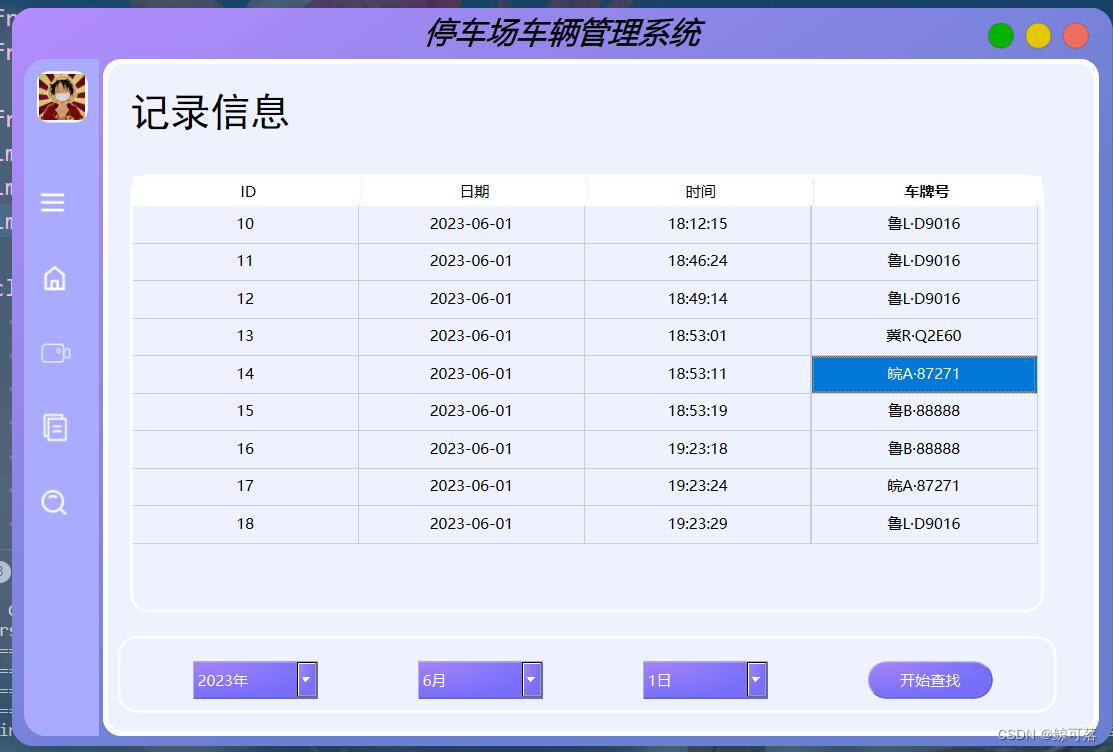
5、演示
6、链接
源码链接
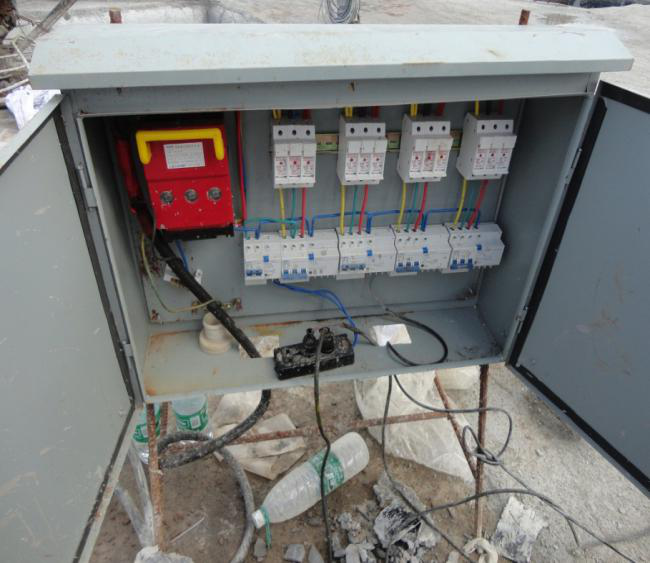



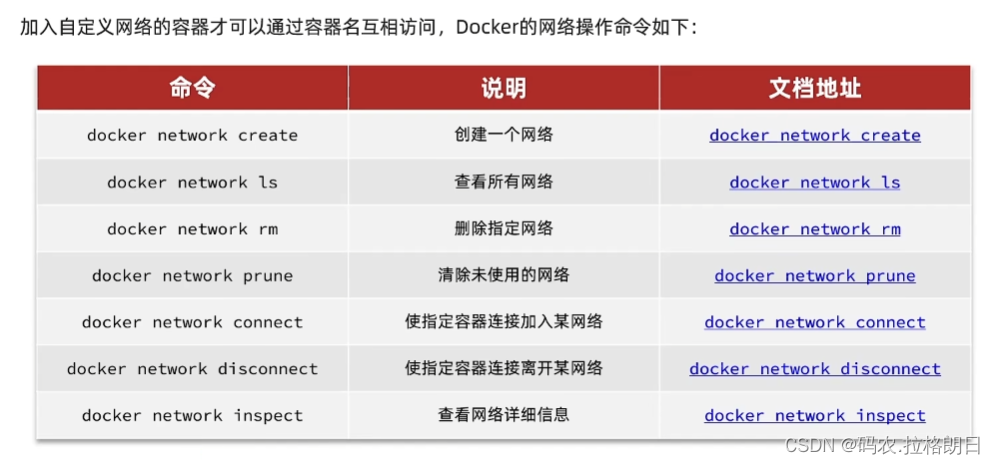
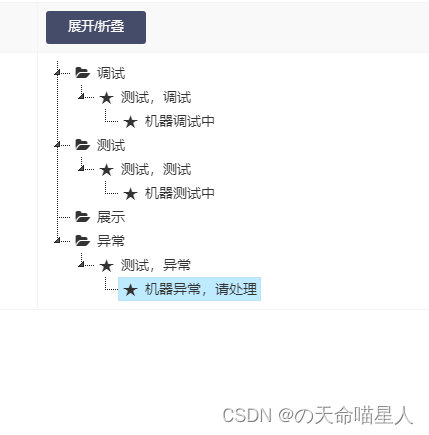
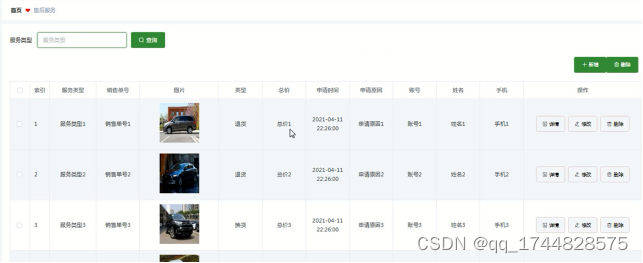
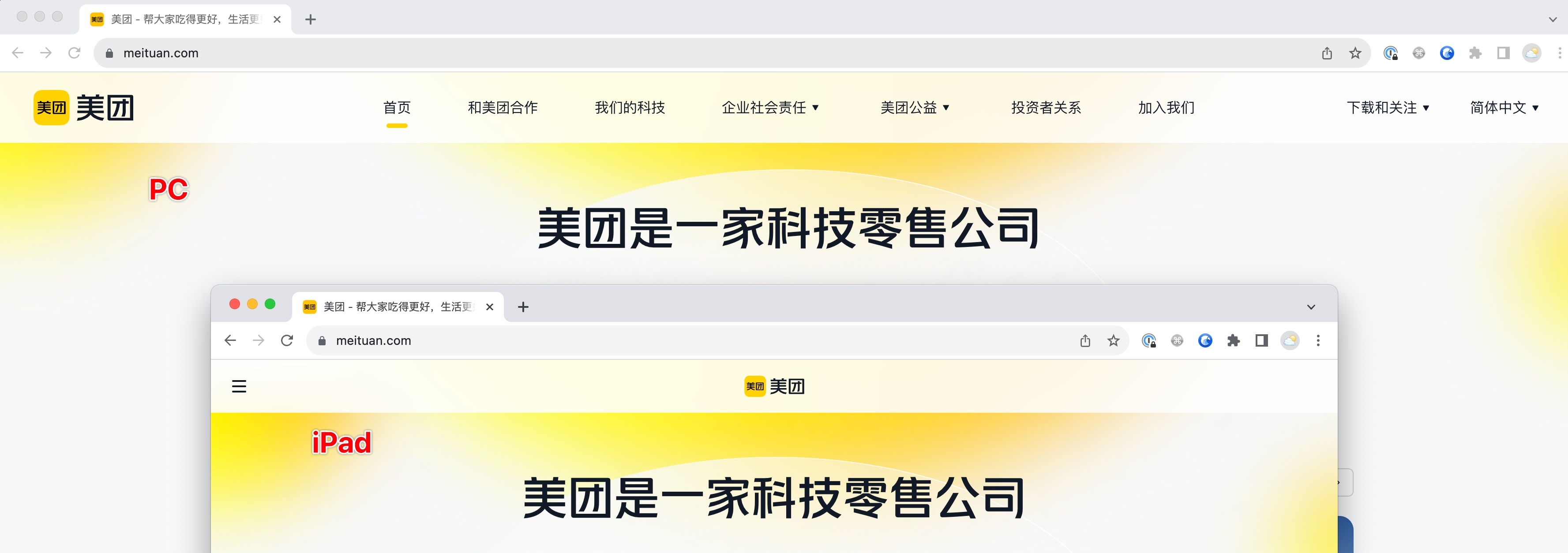
![[陇剑杯 2021]日志分析](https://img-blog.csdnimg.cn/d6ff11ae73244e82b58624a6c1a9e324.png)
